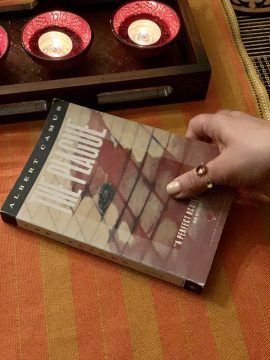by Akim Reinhardt

I was about 10 miles up the road in Long Beach visiting my sister’s family when word came of last week’s massive oil spill in Huntington Beach, Orange Co., California. We were actually headed over to that very beach when my brother in law checked the conditions.
Uh oh.
Ten or twenty years ago I might’ve made some tired, easy joke about how this state is a tragicomic carousel of disasters. Earthquakes, mudslides, droughts, riots, etc. Just add this oil spill to the list. But now it’s the entire nation that resembles a bad joke with punchlines you can smell long before they arrive.
And if this state is a microcosm of the larger nation, with about 12% of the U.S. population within California’s badly angled borders, then perhaps it has something to do with how money both creates and sorta solves problems, at least for some people. The wealthiest state in the world’s wealthiest nation, and neither can get out of their own way. They both stumble about, knocking everything over amid their ravenous search for profits, and then turn to the “regular people,” the actual workers with sigh-inducing lives and miserable commutes, and even the less fortunate, to foot the bill and clean it all up.
America, can’t abide by simple rules designed to keep a pandemic in check because you’re susceptible to the propaganda actively or passively spewed by profiteering TV networks and digital media? Then just spend lavishly to hog the world’s vaccine supply and ride out the worst of it while maintaining your freewheeling ways.
California, don’t have enough water to support both, 40 million people and an enormous, misguided agribusiness complex in a state that’s mostly desert or near-desert? Then spend decades building and maintaining massive hydro reallocation projects that wreak ecological devastation for hundreds of miles around. Read more »

